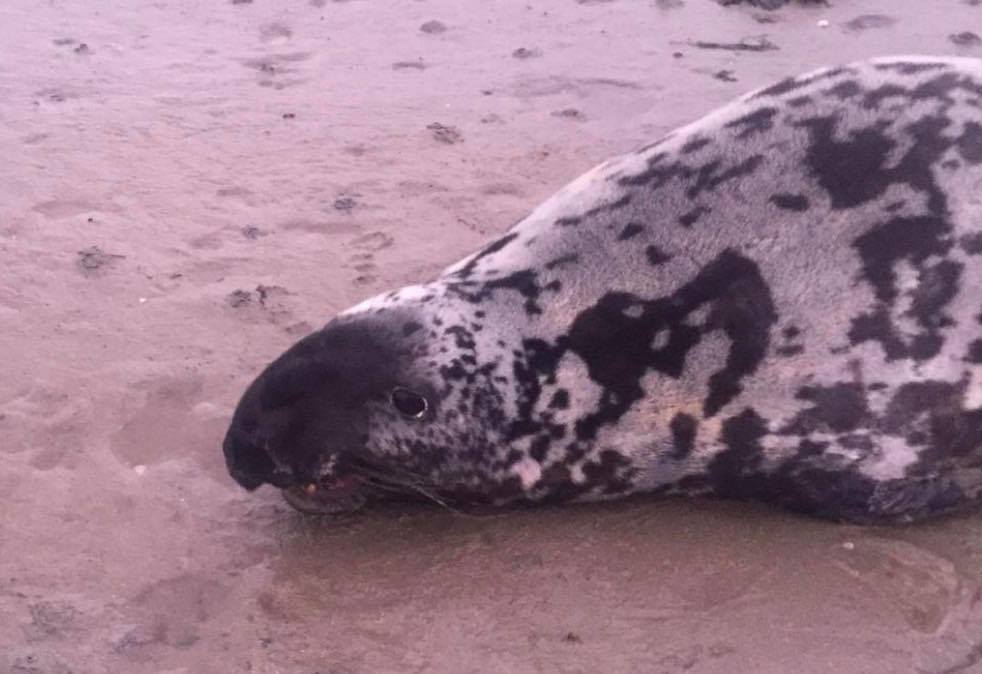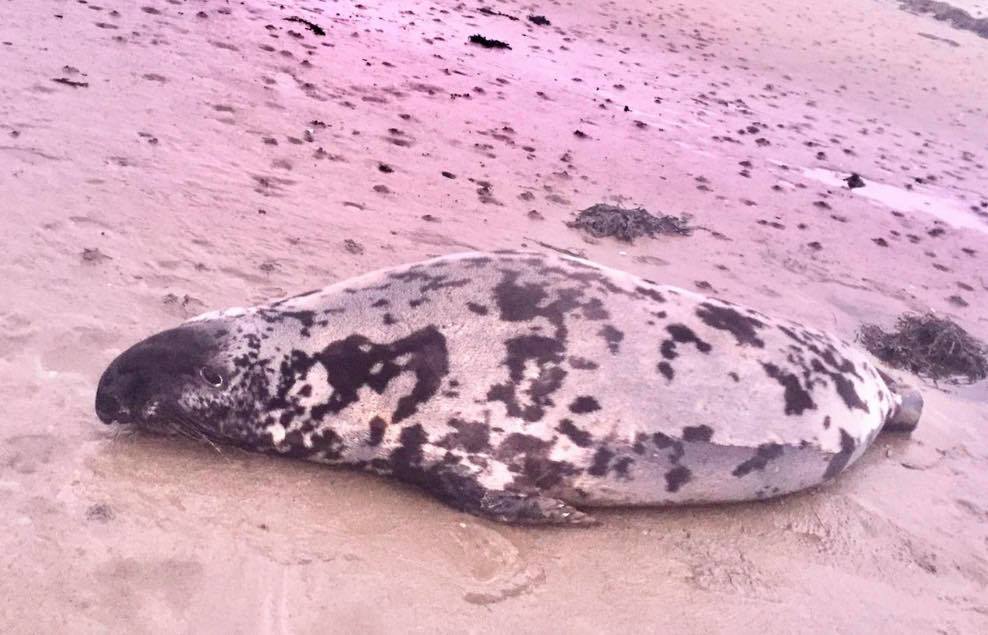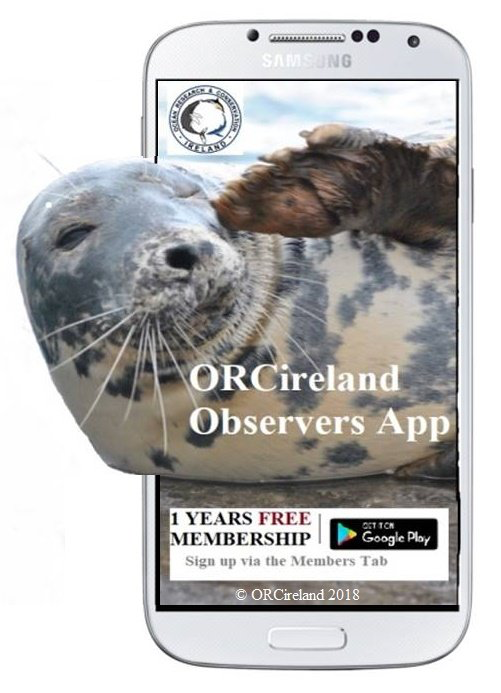New Year, Arctic Species - Hooded Seal reported to Observers App from Schull, in West Cork!
Today we received a rare record of an Arctic seal species to the Observers App from a local Irish beach. Helen Tilson of Schull Sea Safari encountered a hooded seal yesterday January 1st on Toormore Bay, West Cork. O.R.C. has always recorded seals sighted and stranded around Irish coasts through our citizen science tool the Observers App and this is exactly why. Seals just like other top-predators such as cetaceans and sharks are ecosystem indicators of ocean health. So how often have we seen hooded seals in Ireland?
Helen Tilson, owner of Schull Sea Safari in West Cork, encountered a male hooded seal ( Cystophora cristata ) yesterday January 1st on Toormore Beach, West Cork.
There was no sign of the rare Arctic species today according Ben Horgan, O.R.C. Marine Biologist who visited the sight in the hopes of a glimpse of seal. This was later confirmed by Helen herself who also said there was no sign of him today.
We can confirm the hooded seal species identification based on the fact that males exhibit a characteristic enlarged nasal cavity (hood) which can be inflated for display during courtship and as an aggressive posture for defence.
Arctic Hooded Seal - in action in West Cork, Ireland
— Schull Sea Safari (@Schullseasafari) January 2, 2020
1st Jan 2020 - would really like to know if we have more data on the travels on these to Ireland ? @IrishTimes @NatureRTE @NatGeo pic.twitter.com/ESFqzXLClT
Hooded seals are a deep-diving pinniped species that is distributed throughout the North Atlantic and adjacent Arctic marine areas. They are a highly sexual dimorphic species; males and females weight 450 kg and 300 kg, respectively. There is estimated to be around 600,000 hooded seals in the North Atlantic Ocean.
Hooded seals spend most of the year at sea, presumably foraging regularly outside the breeding and molting periods. Two management stocks are recognized, although they cannot be distinguished genetically. Hooded seals in the Northwest Atlantic (NW) stock breed in mid- to late March off the northern coast of Newfoundland (the Front), the Gulf of St Lawrence (the Gulf), and in Davis Strait. These animals migrate to southeastern Greenland by late June or early July to molt. Hooded seals in the Northeast Atlantic (NE) stock breed on the pack ice east of Greenland around Jan Mayen (West Ice) at the same time as NW seals. They disperse broadly after breeding, but return to the pack ice east of Greenland in July to molt, usually just to the north of their breeding location.
Differences in migration patterns and diving behavior have been documented between the NW and the NE stocks. NW Atlantic seals follow regular round-trip migratory paths. The paths of males and females are spatially segregated for animals from the Front, but the paths of males and females from the Gulf overlap geographically. NW Atlantic animals exhibit vertical segregation by sex during the post-breeding migration and during the post-molting season. Animals in the NE stock make unsynchronized, long excursions to sea following breeding and molting, returning intermittently to the ice east of Greenland. During these excursions, pups and adults display vertical segregation in their diving behaviour (pups dive shallower then adults do), despite a striking similarity in the overall spatial patterns of the two age groups. Hooded seals from both stocks travel long distances during their annual cycles, diving almost continuously. The performance of drift dives has been documented for NW Atlantic hooded seals.
There are two historical records of hooded seals in Ireland from Co. Mayo and Co. Galway on the West Coast of Ireland from the early 18th Century. On September 21, 2001, Kevin Mc Cormick recovered a juvenile male hooded seal that was in poor condition from a beach in Co. Wexford and was taken to the Irish Seal Sanctuary. In 2006, another juvenile hooded seal was brought to the Irish Seal Sanctuary. The last time a hooded seal was recorded on Irish shores was in 2016 when a juvenile was found in Co. Donegal and before that, in 2012 one was seen at Sandymount strand in Co. Dublin, according to Johnny Woodlock of the Irish Seal Sanctuary.
Will you become an #Oceanhero and submit your records of marine megafauna to the Observers App available for Android on Google Play or report to us through our website www.orcireland.ie.
References
:
Woodlock, J., 2014. Hooded Seals (Cystophora cristata (Erxleben)) in Ireland and notes on their rehabilitation. The Irish Naturalists' Journal
Vol. 33, No. 2
SHARE THIS ARTICLE

















